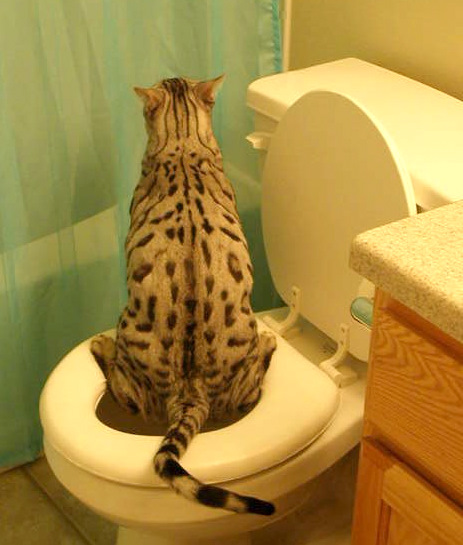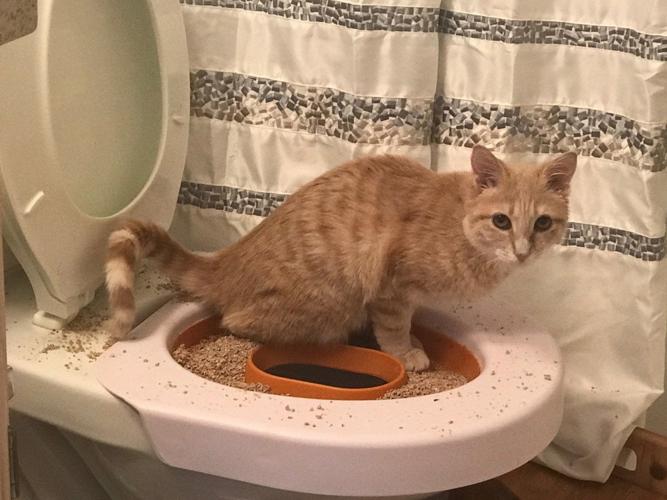Potential Issues of Flushing Cat Poop Down Your Toilet - Protect Your Plumbing
Potential Issues of Flushing Cat Poop Down Your Toilet - Protect Your Plumbing
Blog Article
How do you really feel about How to Dispose of Cat Poop and Litter Without Plastic Bags?

Introduction
As feline proprietors, it's important to be mindful of how we deal with our feline good friends' waste. While it might appear hassle-free to flush cat poop down the toilet, this technique can have destructive effects for both the environment and human wellness.
Alternatives to Flushing
Fortunately, there are much safer and much more liable means to take care of cat poop. Consider the adhering to choices:
1. Scoop and Dispose in Trash
One of the most usual approach of getting rid of feline poop is to scoop it into a biodegradable bag and throw it in the trash. Make certain to utilize a devoted litter inside story and get rid of the waste without delay.
2. Usage Biodegradable Litter
Opt for biodegradable cat litter made from materials such as corn or wheat. These clutters are eco-friendly and can be safely taken care of in the garbage.
3. Bury in the Yard
If you have a yard, consider hiding pet cat waste in a marked area away from veggie yards and water resources. Make certain to dig deep adequate to prevent contamination of groundwater.
4. Install a Pet Waste Disposal System
Invest in an animal waste disposal system particularly developed for cat waste. These systems use enzymes to break down the waste, reducing smell and ecological effect.
Health and wellness Risks
In addition to environmental problems, purging feline waste can likewise present health and wellness dangers to human beings. Feline feces might contain Toxoplasma gondii, a bloodsucker that can create toxoplasmosis-- a potentially serious health problem, especially for expectant ladies and people with weakened body immune systems.
Environmental Impact
Purging cat poop presents hazardous virus and parasites into the water supply, positioning a substantial risk to water ecological communities. These contaminants can negatively affect aquatic life and concession water quality.
Conclusion
Accountable family pet possession expands past giving food and sanctuary-- it additionally entails correct waste monitoring. By avoiding purging pet cat poop down the bathroom and selecting alternate disposal techniques, we can reduce our environmental footprint and shield human wellness.
Why Can’t I Flush Cat Poop?
It Spreads a Parasite
Cats are frequently infected with a parasite called toxoplasma gondii. The parasite causes an infection called toxoplasmosis. It is usually harmless to cats. The parasite only uses cat poop as a host for its eggs. Otherwise, the cat’s immune system usually keeps the infection at low enough levels to maintain its own health. But it does not stop the develop of eggs. These eggs are tiny and surprisingly tough. They may survive for a year before they begin to grow. But that’s the problem.
Our wastewater system is not designed to deal with toxoplasmosis eggs. Instead, most eggs will flush from your toilet into sewers and wastewater management plants. After the sewage is treated for many other harmful things in it, it is typically released into local rivers, lakes, or oceans. Here, the toxoplasmosis eggs can find new hosts, including starfish, crabs, otters, and many other wildlife. For many, this is a significant risk to their health. Toxoplasmosis can also end up infecting water sources that are important for agriculture, which means our deer, pigs, and sheep can get infected too.
Is There Risk to Humans?
There can be a risk to human life from flushing cat poop down the toilet. If you do so, the parasites from your cat’s poop can end up in shellfish, game animals, or livestock. If this meat is then served raw or undercooked, the people who eat it can get sick.
In fact, according to the CDC, 40 million people in the United States are infected with toxoplasma gondii. They get it from exposure to infected seafood, or from some kind of cat poop contamination, like drinking from a stream that is contaminated or touching anything that has come into contact with cat poop. That includes just cleaning a cat litter box.
Most people who get infected with these parasites will not develop any symptoms. However, for pregnant women or for those with compromised immune systems, the parasite can cause severe health problems.
How to Handle Cat Poop
The best way to handle cat poop is actually to clean the box more often. The eggs that the parasite sheds will not become active until one to five days after the cat poops. That means that if you clean daily, you’re much less likely to come into direct contact with infectious eggs.
That said, always dispose of cat poop in the garbage and not down the toilet. Wash your hands before and after you clean the litter box, and bring the bag of poop right outside to your garbage bins.
https://trenchlesssolutionsusa.com/why-cant-i-flush-cat-poop/

I am very eager about How to Dispose of Cat Poop and Litter Without Plastic Bags and I am assuming you appreciated the entire post. Sharing is good. Who knows, you could be helping someone out. I recognize the value of reading our article about Can You Flush Cat Poo or Litter Down the Toilet?.
Call Today Report this page